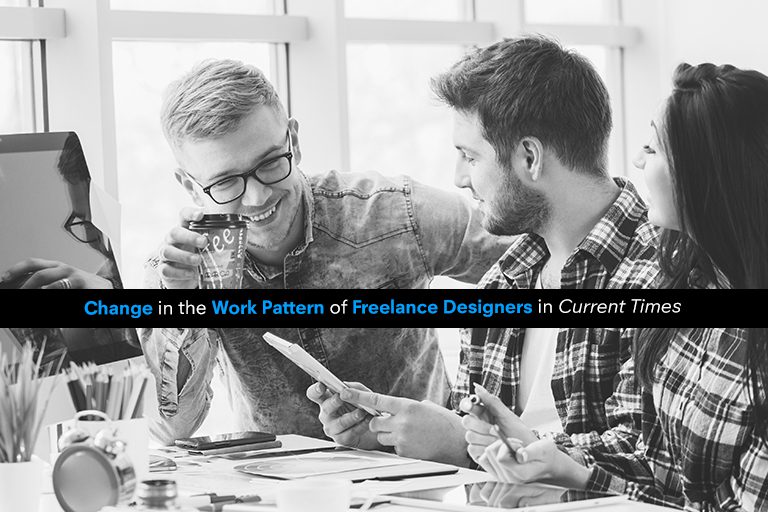A big question for changing times: What changes are in process now that will impact the work patterns for designers by 2025? What will designers be expected to do, where will they work from, how technology will impact designers’ daily routines and what career paths are opening up?
The growth of the internet (more so of social media applications) has been a key reason for stagnation of traditional design-focused work opportunities. These changes in our everyday lives have also pushed the way designers work, shaping their work patterns and the expectations on them. A considerable number of designers are already self-employed freelancers in our booming gig economy, which further suggests that their successors will also have to build careers from ground up with a focused approach on networked communications (social media, apps etc).
Also read: How skilled and experienced designers are the backbone of start-ups
If you are a designer or about to become one, here are some changes shaping your work culture:
Gig economy work
While work from home was a standard response during pandemic, many organizations allow their workers now to permanently work from home. This further led many to ask the question why not work for yourself?
Designers here benefit the most, especially brand identity designers, web designers and graphic designers due to the nature of their work more focused on having access to the internet and a laptop. More people over the pandemic, especially post job loss, were seeking work in freelancing, or the gig economy as an alternative to full time employment.
Also read: How get your children ready for design studies?
Work in collaboration across boundaries
The present as well as the near future of changing work patterns shows us how designers will work much more across boundaries, in a rather collaborative and holistic approach along with other professionals such as engineers, ecologists, psychologists, people who work in care, tech and more concentrated in AI. The future calls for a more collaborative approach and different skills to work together. This means designers will focus on not simply the economic value but also the wider social and environmental impact on the local community and global community.
Remote working/ Decentralized working
With the internet, cloud-based era with collaborative project management tools like Google Docs, Drive, Slack and many more, working remotely is a rather common thing in most companies today. More so especially after the pandemic’s work-from-home culture, this has become an interesting concept for brands to incorporate in their work structures. With the majority of millennials dominating the workforce, it’s been spoken by many researchers that their motivation is being flexible and free – working from home to a cafe or an international vacation spot. Designers benefit the most out of this decentralized work culture and international flat structured teams.
Technology fluent, humanity -centric
A major change in the work culture for designers will be the use of technology in their day-to-day tasks. From building storyboards, mood boards to testing prototypes with their target audience and understanding what trends are key – everything today is massively dependent on Artificial Intelligence (AI). While AI is one aspect, to offer a fully immersive experience – AR/VR are another rising tech in the field of design that designers have to be fluent in. Design is becoming a more data-rich, data-aware landscape that is noting, reading and responding to everything we do.
While these emerging tech are necessary for designer to be well-versed in, or at least how they impact their jobs, design is also what brings everything together – and here a major shift from human centric to humanity centric design is bringing in concepts of sustainability, environmentally conscious design and community design as an essential change in the way designer work today.
Read more: How metaverse is going to change the way you design things
Consumer driven and consumer centric design
With the help of AI, we are now able to define what key trends of the past have been successful/ failed. This helps designers capture the heart of the successful trends, what made them successful and work on to build unique concepts that will capture the consumers. AIGA Designers of 2025 report made a great point to further suggest how consumers active participation will be key in defining how designers build on an idea – “People are no longer passive consumers of information in this complex social and technological landscape, but active participants in generating the content and quality of experiences”
Also read: Shift from human centric design to humanity centric design
Well-versed in area besides design
AIGA Designers of 2025 team also focused on the challenges in the changing work patterns, one such is ‘complexity’ of the design problems today that are increasingly situated within larger systems. They are further characterized by interdependent physical, psychological, social, cultural, technological and economic relationships. More interdisciplinary teams are becoming a common aspect in workplaces and design problems are increasingly hinged on collaborations.
Also Read: Product design trends in sportswear and outdoor equipment
To conclude, these changes in workplace culture for designers by 2025 look at being more adaptive, agile and flexible. What will be interesting further is how designers will become more like facilitators in the background. The future looks at more aggregation and curation where designers will be expected to bridge gaps with an increased awareness of implication of design. They will be asked to be more collaborative than designing in silos, they will be able to work remotely entirely while successfully implementing new designs and also will need to have more comprehensive knowledge of the emerging technologies.






Want to Become a Designer ?
Strate is a unique design school that nurtures your talents as a designer by offering state-of-the art designing courses in Bangalore.
Join Strate